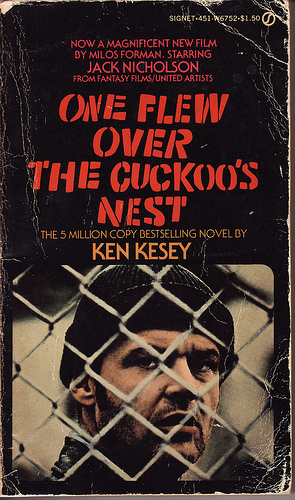I first read The Man in the High Castle in grad school. It wasn’t my first encounter’s with his fiction (that was, bizarrely, the largely forgotten We Can Build You) but I hadn’t read much of him at the time, and while I liked it, it didn’t grab me the way his other seminal works did (especially Ubik). That’s a bit surprising, as I’m a sucker for alternative history, and on rereading I found it displayed many of Dick’s usual strengths: nuanced characters understated but eloquent description, heady concepts. There is always an iceberg quality to Dick’s fiction, in that you sense you’re seeing only the small portion of the story peeking above the surface, while a mountain of detail lurks below, unexposed but supporting the visible tip.
The premise of High Castle is pretty well known: the Japanese and the Nazis won World War 2 and now fight for hegemony in a conquered America. Interestingly, the characters are all fairly unremarkable people: a Japanese bureaucrat, a store owner specializing in Americana fetishized by the Japanese, a fired metalworker, a judo instructor. As always with Dick’s work, tiny, fascinating details lurk in the corners: in this case, it’s society’s fascination with the I Ching, a Chinese book of divination that guides the behavior of many of the main characters.
The titular Man in the High Castle, Hawthorne Abendsen, only appears at the very end, though he looms throughout as the author of a book called the Grasshopper Lies Heavy, which posits an alternative alternative history in which the Us and Britain (but not Russia) won WW2. The Nazis are as expected not fans (they never did like books much), and attempt to assassinate him. Such attempts originally drove him to retreat to the eponymous High Castle, but one of the characters (Juliana Frink, Judo instructor) finds him living in a regular house, having resigned himself to whatever fate may bring him.
It is here that Dick’s universal fascination with the nature of reality—a cornerstone of essentially all his fiction—peeks through, just a little. Despite being a book about an alternate reality, the nature of what is true doesn’t feature in High Castle the way it does in, say, Ubik or Do Androids Dream of Electric Sheep? or A Scanner Darkly. That is, we presume throughout the novel that what we are reading is, in the context of the story, true. It is only at the very end, when Abendsen reveals to Juliana that he used the I Ching to compose every bit of the Grasshopper Lies Heavy. This leads Juliana to suggest that the I Ching actually used him, and through his words told a fundamental truth deeper than reality: that Germany and Japan actually lost the war. This is such a Dickian idea—that there exists a reality more true than the factual universe the characters are experiencing, and that such a truth mirrors (but is distinct from) the universe of the reader—and I’m embarrassed to say I missed it the first time around.
Dick truly is one of the great American writers of the Twentieth century. I’ve always bristled at the notion of some genres as more inherently “literary” than others, but if that term means anything, it is the idea of words and stories being able to convey a deeper understanding of humanity and the world. And Philip K Dick’s novels do that as well as anybody’s.



